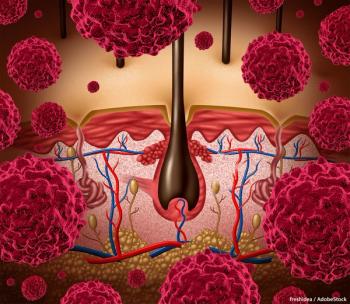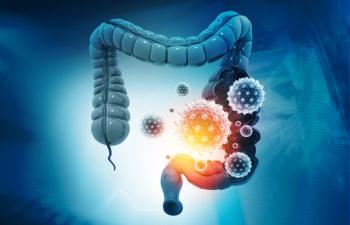
Chlorotoxin-Based Therapy Shows Safety, Feasibility in Glioblastoma
Results showed no “deleterious reactions” with chlorotoxin-directed cellular therapy in a small cohort of patients with recurrent glioblastoma.
The use of a CAR T-cell therapy incorporating chlorotoxin, a peptide derived from scorpion venom, appeared to be well-tolerated in a small cohort of patients with recurrent glioblastoma, according to Michael Barish, PhD.
In a conversation with CancerNetwork®, Barish described key safety and early clinical activity findings from a phase 1 trial (NCT04214392) assessing chlorotoxin-directed CAR T-cell therapy among 4 patients with glioblastoma. He noted no “deleterious reactions” associated with the cellular therapy, along with signs of biological activity based on MRIs.
Barish, a chair in the Department of Neurosciences/Developmental & Stem Cell Biology at City of Hope, stated that the novel agent elicited cytokine production, indicating its activity in glioblastoma tumors. Although the responses observed in the phase 1 trial were not as strong as anticipated, Barish concluded that the investigational therapy nevertheless demonstrated feasibility and safety in patients.
Transcript:
We knew from other work that chlorotoxin is safe [when] being given to humans. It [would] never be used in this way, but people have used it to try and target glioblastoma cells, simply as the toxin. There are groups that are using it to fluorescently tag it and use it to make something called “tumor paint”, where the idea is that surgeons could then look for the glioblastoma cells when they were doing surgery. We knew going in that we thought it would be safe, but you never know until you do it, obviously.
We were very pleased that, in fact, we had essentially no deleterious reactions in the patients whom we gave it to. It seemed to do what it was supposed to do; maybe not as strong as we wanted, but there was a reaction in the tumors of the patients. In some advantageous cases, you could see signs of biological activity within the MRIs. You could see cytokine production, indicating that the CAR T cell was active in the tumor; that was the most important thing. There were no bad reactions to it. It was well-tolerated in small number of patients.
We saw the activity we wanted to see, which is that the patients responded when it was injected into the tumor cavity after resection. That told us we had biological activity, and that it seemed to be safe and well-tolerated. The response was not as strong as we might have liked, but that’s not the point of a phase 1 trial. A phase 1 trial is to show safety and feasibility, and we did see that.
Reference
Barish ME, Aftabizadeh M, Hibbard J, et al. Chlorotoxin-directed CAR T cell therapy for recurrent glioblastoma: interim clinical experience demonstrating feasibility and safety. Cell Rep Med. 2025;6(8):102302. doi:10.1016/j.xcrm.2025.102302.
Newsletter
Stay up to date on recent advances in the multidisciplinary approach to cancer.



















































































